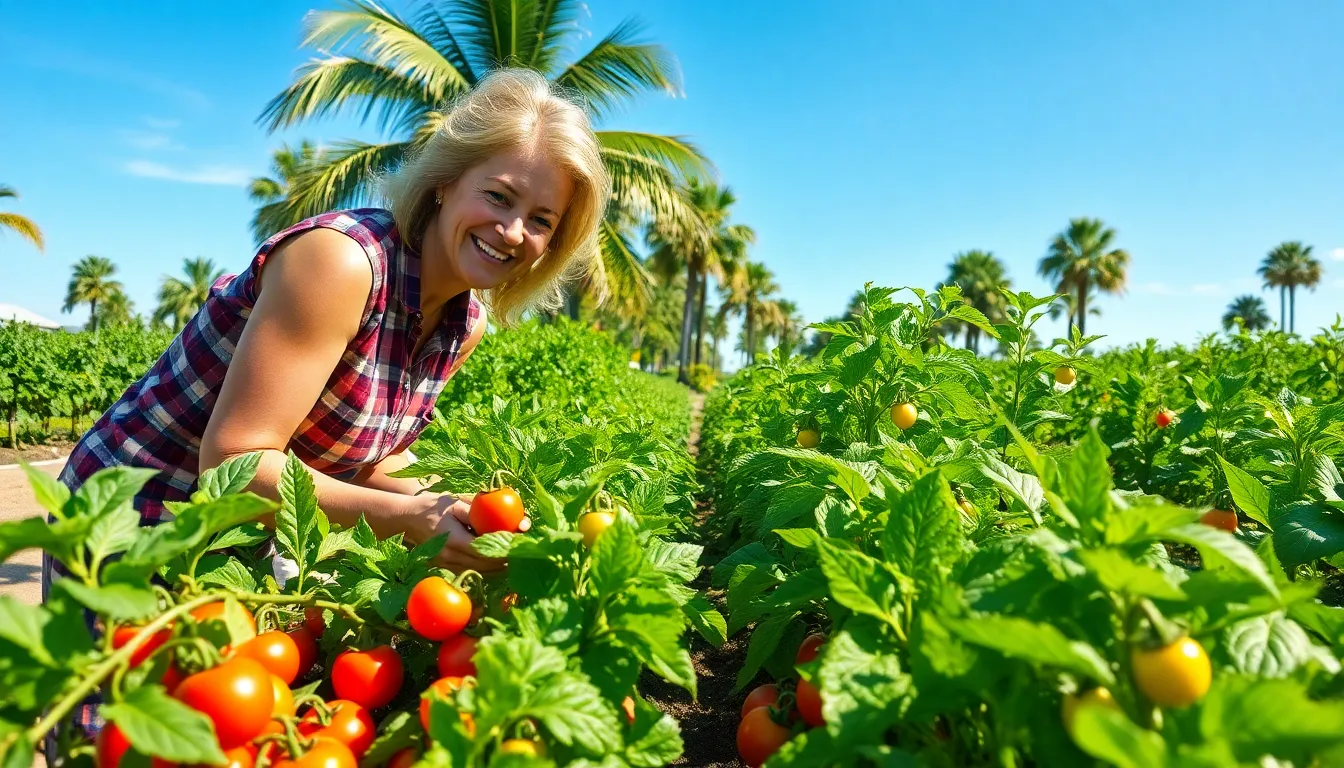Physical Address
304 North Cardinal St.
Dorchester Center, MA 02124

In the Sunshine State, where palm trees sway and oranges grow, understanding the growing season can be the difference between a bountiful harvest and a garden that just won’t cooperate. Florida’s unique climate offers a diverse range of crops, but timing is everything. With the right Florida growing season chart in hand, gardeners can unlock the secrets to planting success and avoid the dreaded “oops, I planted too late” moment.
Florida’s growing season plays a critical role in gardening success. Understanding this season allows growers to maximize their gardening potential.
A growing season refers to the period during which plants can thrive and produce crops. This timeframe varies across Florida’s regions. In most areas, the growing season extends from March to November for vegetables and fruits. Certain crops may even flourish year-round, thanks to Florida’s warm climate.
Knowing the growing season aids gardeners in planning and planting. Timing ensures that crops mature properly for optimal harvest. Additionally, understanding these patterns helps prevent issues related to frost and heat stress. Florida’s diverse climate means different regions may have varying growing seasons, impacting crop selection and yield. Successful gardeners leverage this knowledge to align their planting schedules with seasonal changes.

Florida’s climate varies significantly across its regions, directly influencing local growing seasons. Understanding these differences supports better gardening practices.
Northern Florida experiences a humid subtropical climate with marked seasonal variations. Winters can present frost, leading to a growing season typically lasting from March to November. May and June show peak temperatures, while cool temperatures in December through February can affect tender crops. Seasonally, vegetables such as lettuce, carrots, and cabbage prosper, thriving in the cooler months. These crops can withstand occasional frost and cold spells. Gardeners focus on planting heat-sensitive plants like tomatoes and peppers after the last frost, optimizing yields during warmer months.
Central Florida enjoys a subtropical climate offering a longer growing season compared to its northern counterpart. On average, temperatures remain mild, with only rare frost occurrences. The ideal growing period spans from early March to late November, accommodating a wide variety of crops. Summer heat encourages produce like sweet corn, cucumbers, and squash, which flourish during the warm season. A variety of fruits, including strawberries and citrus, thrive well in Central Florida’s conditions too. Timing seeded crops correctly within this extended period maximizes harvest potential.
Southern Florida features a tropical climate that significantly enhances the growing season. With temperatures rarely dropping below 50°F, this region can sustain year-round gardening. Farmers and gardeners benefit from the ability to plant crops in multiple seasons, including staples like beans, peppers, and a wide range of tropical fruits. The summer months tend to bring humidity and rain, which favor quick-growing crops. Coastal areas often provide different microclimates, creating opportunities for diverse planting strategies. Growing calendars in Southern Florida are flexible, allowing for staggered planting and continuous harvests.
Understanding Florida’s growing season chart helps gardeners optimize their planting efforts. Knowledge of regional differences in climate allows for better crop management and planning.
Northern Florida follows a growing season from March to November due to its humid subtropical climate. Gardeners must be mindful of cooler winters affecting tender plants. Central Florida, with its subtropical climate, offers a longer growing season from early March to late November, accommodating a diverse selection of crops. Southern Florida enables year-round gardening, providing opportunities for staggered planting and continuous harvests. Recognizing these seasonal variations guides gardeners in selecting appropriate crops based on their local climate.
For Northern Florida, it’s advisable to plant cool-season crops such as lettuce or broccoli in early spring. Central Florida gardeners can plant okra or tomatoes from late March through early September for optimal growth. In Southern Florida, planting choices include peppers and beans throughout the year for ongoing production. Adjusting planting dates based on temperature fluctuations secures better yields. Utilizing the Florida growing season chart promotes efficient gardening across all regions.
Understanding key practices ensures productive gardening in Florida’s unique climates. Following these tips can significantly enhance crop yields.
Soil quality directly influences plant health. Start with testing soil to determine nutrient levels and pH balance. Amendments such as compost or mulch can improve soil structure and fertility. Drainage must also be a priority; sandy soil in Florida requires retention strategies to keep moisture around plant roots. Mixing organic materials enriches soil, promoting beneficial microbial activity. Cultivating the soil before planting creates a loose foundation for roots, essential for strong growth.
Selecting suitable plants involves understanding local climates. Northern Florida benefits from cool-season crops like lettuce or broccoli. Central Florida thrives with heat-loving vegetables such as tomatoes, which perform best in late spring. Southern Florida supports an array of year-round options, including peppers and beans. Researching weekly temperature patterns allows gardeners to make informed decisions based on frost risks. Crop rotation can further enhance soil health and yield while managing pests more effectively. Picking varieties suited to specific microclimates improves gardening success.
Understanding Florida’s growing season is vital for any gardener looking to maximize their harvest. By utilizing the Florida growing season chart and recognizing the unique climate zones, gardeners can make informed decisions about what to plant and when. This strategic approach not only enhances the likelihood of a successful yield but also minimizes the risks associated with weather fluctuations.
With careful planning and attention to local conditions, gardeners can cultivate a thriving garden year-round. Embracing the diverse growing opportunities in Florida ensures that every gardener can enjoy the fruits of their labor while contributing to a sustainable gardening practice.